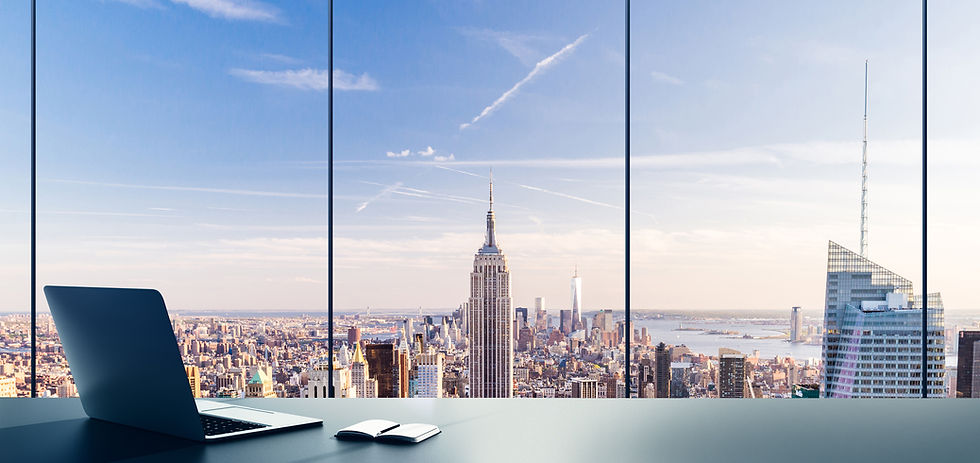Insight of the Day: Global beauty insights and trends for 2025
- InsightTrendsWorld

- Dec 16, 2024
- 3 min read
Detailed Findings:
The global beauty and personal care market reached $570.1 billion in 2023, with a 3% growth rate.
There's a significant focus on wellness and personal care, with nearly half of industry professionals launching related products in 2023.
Sustainability claims related to packaging have increased to 67%, demonstrating a strong industry shift.
Consumers are increasingly prioritizing products that are "not harmful to nature," particularly in the US and Europe.
Key Takeaways:
Sustainability, mindfulness, and inclusivity are the dominant trends shaping the beauty industry in 2025.
Consumers are seeking products that align with their values and promote both personal and planetary well-being.
Brands need to innovate in packaging and formulations to meet these evolving demands.
Trends (with sub-trends):
Sustainable Performance:
Eco-friendly packaging (upcycling, refillable, regenerative sourcing).
Regenerative beauty (products with positive environmental impact).
Mindful Beauty:
Holistic self-care and long-term well-being.
Embracing natural aging.
Sensory engagement through packaging.
Embracing Self:
Inclusivity and diversity.
Celebrating individuality and cultural heritage.
Personalized products and experiences.
Consumer Motivation:
Desire for products that are effective and environmentally responsible.
Seeking holistic well-being and a connection to nature.
Expressing individuality and belonging through inclusive products.
What is Driving the Trend:
Growing awareness of climate change and environmental issues.
Increased focus on mental and emotional health.
Social media and cultural shifts towards inclusivity and self-acceptance.
Motivation Beyond the Trend (Deeper Needs):
A sense of responsibility towards the planet and future generations.
A desire for authentic self-expression and connection with others.
Seeking a more balanced and meaningful lifestyle.
People the Article is Referring To:
Beauty and personal care consumers globally, with a specific focus on those in the US and Europe.
Gen Z consumers are specifically mentioned as driving the inclusivity trend.
Description of Consumers, Products, or Services:
Consumers of all ages and demographics who purchase beauty and personal care products.
Products include skincare, haircare, makeup, and fragrance.
Services include personalized consultations and experiences.
Age of Consumers:
The article primarily focuses on current trends and future predictions, therefore ages are not specified. However, Gen Z are mentioned as key drivers for inclusivity.
Conclusions:
The beauty industry is undergoing a significant transformation, driven by consumer demand for ethical and sustainable products.
Brands that prioritize sustainability, mindfulness, and inclusivity will be best positioned for success in the future.
Implications for Brands:
Invest in sustainable packaging and formulations.
Develop inclusive product lines and marketing campaigns.
Communicate authentically about their values and commitments.
Focus on creating products and experiences that promote well-being.
Implications for Society:
Reduced environmental impact from the beauty industry.
Greater acceptance of diversity and inclusivity.
Increased focus on holistic health and well-being.
Implications for Consumers:
Access to more sustainable and ethical products.
Greater choice and personalization in beauty offerings.
Empowerment to express their individuality.
Implication for Future:
Beauty industry will likely become more circular, with a focus on reducing waste and resource consumption.
Personalized beauty experiences powered by technology will become more prevalent.
The lines between beauty, wellness, and technology will continue to blur.
Consumer Trend: Conscious Consumption
Consumer Sub-Trends: Sustainable Beauty, Mindful Beauty, Inclusive Beauty
Big Social Trend: Increased Environmental Awareness and Social Consciousness
Local Trend: Varies by region, but generally aligns with the global trends.
Worldwide Social Trend: Globalization of beauty standards and practices, combined with a push for authenticity.
Name of the Big Trend Implied by Article: Ethical and Holistic Beauty
Name of Big Social Trend Implied by Article: The Rise of the Conscious Consumer
Social Drive: A desire for positive change and a better future.
Learnings for Companies to Use in 2025:
Integrate sustainability into every aspect of their business.
Prioritize transparency and authenticity in their communication.
Embrace diversity and inclusivity in their products and marketing.
Invest in innovation to meet evolving consumer needs.
Strategy Recommendations for Companies to Follow in 2025:
Develop clear sustainability goals and metrics.
Collaborate with suppliers and partners who share their values.
Engage with consumers on social media and other platforms to build relationships.
Offer personalized products and experiences that cater to individual needs.
Final Sentence (Key Concept): The future of beauty lies in a holistic approach that prioritizes sustainability, mindfulness, and inclusivity, empowering consumers to express their authentic selves while contributing to a healthier planet.
What Brands & Companies Should Do in 2025 and How:
Brands should embrace the "Ethical and Holistic Beauty" trend by:
Developing sustainable packaging: Using recycled, recyclable, or biodegradable materials; offering refillable options.
Formulating clean and ethical products: Sourcing ingredients responsibly; avoiding harmful chemicals.
Promoting inclusivity: Offering a wide range of shades and products for diverse skin tones, hair types, and genders; featuring diverse models in marketing campaigns.
Communicating authentically: Being transparent about their values and practices; engaging with consumers in a meaningful way.
Creating personalized experiences: Using technology to offer customized product recommendations and beauty routines.





Comments